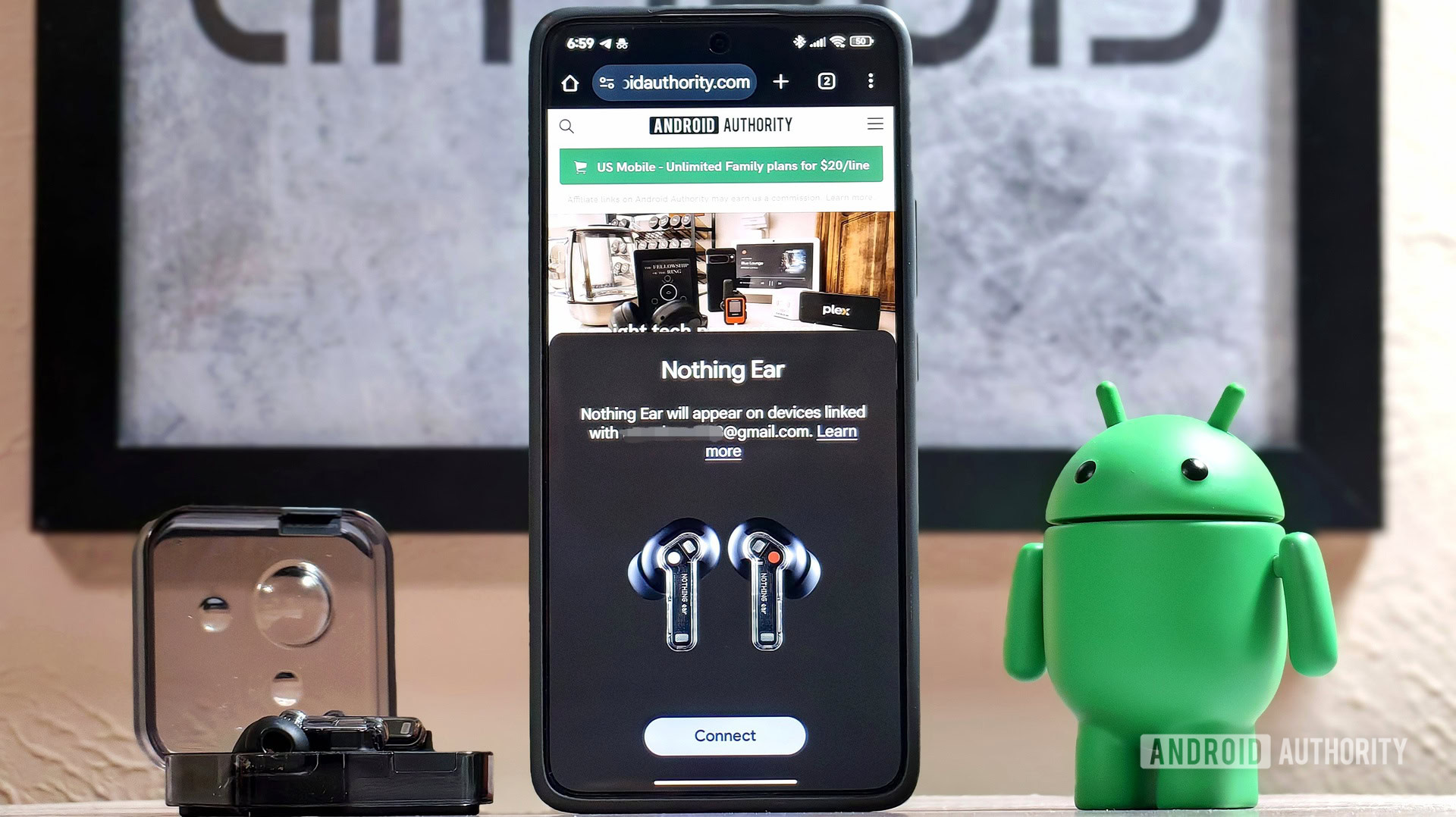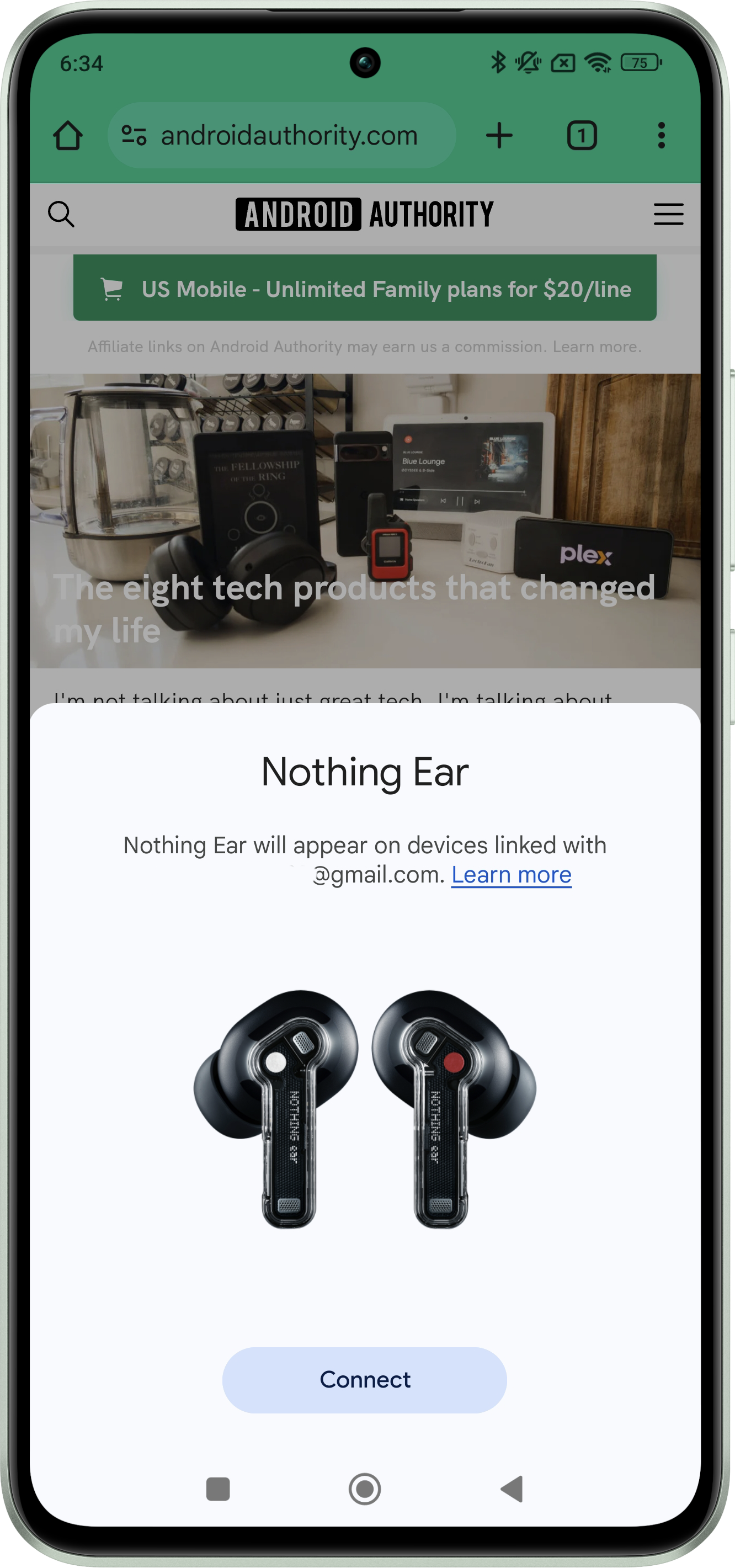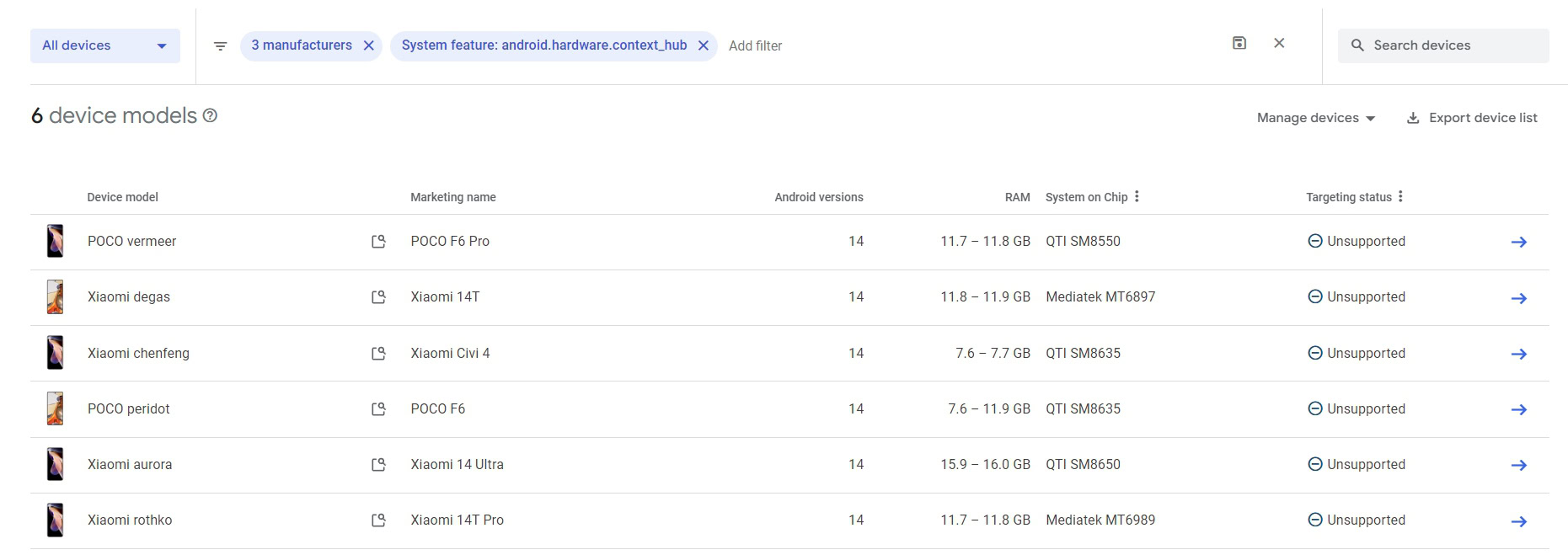Affiliate links on Android Authority may earn us a commission. Learn more.
Another OEM is making its phones work better with Google Fast Pair
October 21, 2024

- Xiaomi is using the ultra low-power co-processor found in its 2024 flagship phones to boost Fast Pair responsiveness.
- Fast Pair is the feature that lets you pair your phone to Bluetooth accessories with a single tap.
- Xiaomi is using Android’s Context Hub Runtime Environment to offload Fast Pair scanning to the ultra low-power co-processor, making scans faster and more power efficient.
Pairing Bluetooth accessories to your Android device can sometimes be a hassle, which is why Google created Fast Pair, a protocol that makes the pairing process a single tap. Certain Android phones from Google and OnePlus are able to quickly detect when a Fast Pair-enabled Bluetooth accessory is ready for pairing, while other devices may experience a bit of a delay in picking that up. Xiaomi phones used to have that slight delay, but starting with their 2024 flagships, they’ve included support for a feature that boosts Fast Pair responsiveness.
Fast Pair simplifies connecting Bluetooth accessories like headphones, smartwatches, tracker tags, and mice with devices running Android or Chrome OS. The service is baked into the Google Play Services app, which scans for the Bluetooth Low Energy packets that Fast Pair-enabled accessories advertise. When the service picks up one of these packets in a scan, it looks up the accessory’s details in Google’s Fast Pair database and then shows you a dialog asking you if you want to pair to the device.

To save battery life, your Android device or Chromebook doesn’t continuously scan for the packets that Fast Pair-enabled accessories advertise. Rather, your device periodically scans for them, which means there might be a slight delay between when the Fast Pair-enabled accessory starts advertising and when your device detects that advertisement and shows the dialog. This isn’t really noticeable when your device’s screen is on, but it might be a bit noticeable when you turn your device’s screen on after it’s been off for a bit as it will have been in a low-power state during which it scans less frequently. That’s where Android’s Context Hub Runtime Environment and Google’s Nearby nanoapp come in.
The Context Hub Runtime Environment, or CHRE for short, is an Android API that lets the OS offload certain tasks to the device’s ultra low-power co-processor, often called a sensor hub or context hub. This is beneficial because the device’s main applications processor (AP) consumes a lot more power than the context hub. Offloading simple tasks to the context hub like scanning for Fast Pair advertisements can not only save battery life but also improve responsiveness. This is because the scanning interval can be decreased without noticeably impacting battery life.
In early 2023, Google announced that select OnePlus phones “will notice increased responsiveness with Fast Pair when they pair the phone with new devices like earbuds.” This is thanks to “CHRE’s power efficiency which helps prepare information for the Application Processor while it’s asleep—so it’s ready near-instantly when you need it.”
Google said it was “looking forward to seeing new partners incorporating support for CHRE,” but it never followed up in the over year and a half since then to mention if any new partners actually did add support for the API. However, we’ve discovered that Xiaomi’s 2024 flagship phones not only support CHRE but also take advantage of it to improve Fast Pair responsiveness, just like OnePlus and Google do.
While I was digging through my Xiaomi 14T Pro, I discovered that it declares support for CHRE. I knew this because the flag android.hardware.context_hub returned true for the 14T Pro. Checking the Google Play Console, I verified that Xiaomi’s other 2024 flagship phones, such as the POCO F6 series, Xiaomi 14 series, and base Xiaomi 14T, also declare support for CHRE.

Furthermore, each of these devices preload Google’s Nearby nanoapp, which is a tiny app that Google distributes to run Fast Pair discovery on the context hub. This nanoapp is also found on select OnePlus and Pixel devices that run Fast Pair discovery on the context hub, but it can’t be interchanged between devices because it has to be compiled for a device’s specific context hub hardware. The version found on my Xiaomi 14T Pro, for example, was compiled for MediaTek’s context hub, code-named “tinysys.”

“Nearby,” in case you’re wondering, is the name of the underlying connectivity library that Fast Pair and Quick Share rely on. Speaking of Quick Share, Google mentioned in its 2023 blog post on CHRE that it “imagine(d) the tech being able to boost other Android features like Nearby Share, improving responsiveness when it comes to sharing files with friends from your phone.” However, we don’t know if Google has actually started offloading any aspect of Quick Share to the context hub. The company already offloads a plethora of tasks to the context hub, including the Pixel’s car crash detection feature, but it’s difficult to know exactly what features are or aren’t offloaded since the nanoapps aren’t open source.
In any case, it’s good to see OEMs like Xiaomi work with Google to improve the user experience, even if it’s on tiny changes that the vast majority of people won’t notice. CHRE can do a lot more than just make Fast Pair more responsive, though, so adding support for it could have additional benefits down the road, like bringing Google’s car crash detection feature to more devices.